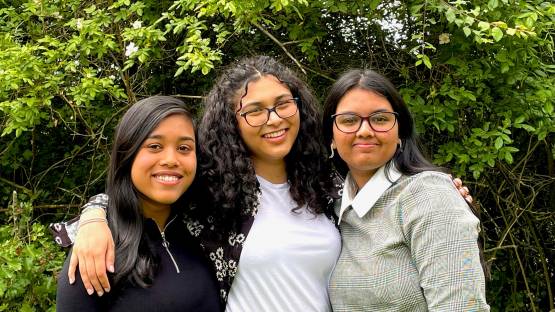Amid growing global interest in the use of nuclear power to mitigate climate change, students from around the world joined an IAEA filmmaking initiative underscoring the need for a clean energy future powered by the atom.
More than 300 teams comprising some 1000 students under the age of 18 submitted short videos to the IAEA contest on the Role of Nuclear Technology in Addressing Climate Change.
Sonia’s Story, the winning entry by a three-person team called “Fission Future” from the United Kingdom, tells the story of a mother in 2080 struggling to maintain her family as catastrophic climate change has buried island states under the oceans, flooded major coastal cities, and resulted in an extreme scarcity of fuel, food and jobs.
Sonia pinpoints the moment when the sharp descent into self-inflicted misery began: a 2025 referendum that rejected further use of nuclear power. All this could have been avoided, she believes, if people had their facts straight about nuclear energy’s potential as a safe, reliable and low carbon source of energy. Sonia’s Story has had nearly 2000 views on YouTube and more than 340 likes.
The contest was “an eye-opening demonstration of creativity and enthusiasm from students in many diverse places around the world,” said Jerry Hopwood, one of the contest judges and President of Canada’s University Network of Excellence in Nuclear Engineering (UNENE). “It was impressive to see the extent to which students could grasp the essentials of how nuclear technologies can contribute to addressing climate change, and at the same time find engaging ways to communicate. That energy is infectious for all of us.”
The contest was held in several stages and judged by an international committee of 16 members who reviewed each submission. The films were judged by their scientific accuracy, creativity and originality, theoretical and practical content, absence of copyright material and number of YouTube likes.
As part of the IAEA’s efforts to inspire more women to take an interest in nuclear science and technology, the contest required that half of the members of any team must be female. Many submissions—including the winning film—ended up coming from all-female teams.
After much discussion among the judges, the IAEA selected seven regional best and five global finalist videos. The winner and runners-up from Albania, China, Malaysia and the Philippines were announced by Wei Huang, Director of the IAEA Division of Planning, Information and Knowledge Management, during the 66th IAEA General Conference last September.
Special mention was given to Hosseinpour Mehranna from Iran as the youngest participant. She starred in Mehranna Earth, which won best video in Middle East region. Several other entries came from countries that do not have nuclear power programmes.
“We had so many high quality submissions that it was really difficult to score and rank them,” said Helena Zhivitskaya, an IAEA Knowledge Management Specialist who organized the contest. “Participants up to the age of 18 showed an amazing ability to research, process and present complex information, but they also gave new meaning to the conversation about the clean energy transition.”






